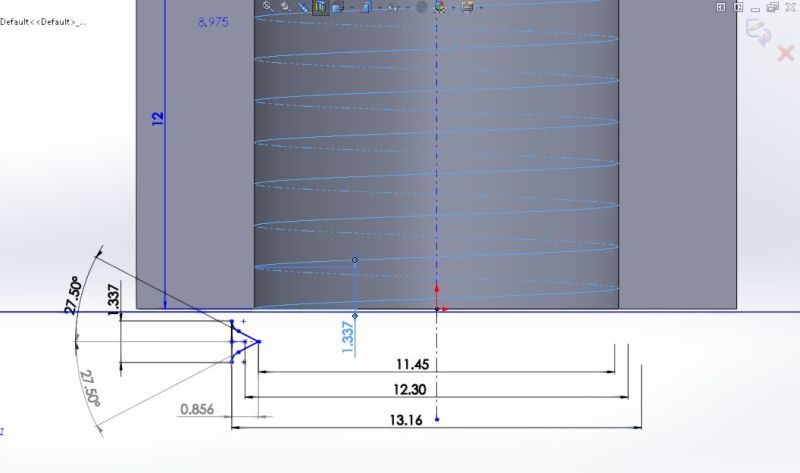Hi Everyone,
I would like to model a stand size BSPP 1/4" type part with internal and external threads that will work with standard 1/4" threads.


I can't seem to find a way to cut the profile and feeling a little lost on the point where I pierce on to the helix.
Could anyone help please?
Thanks.
My Solidworks 2014 3D CAD file is downloadable here -
I would like to model a stand size BSPP 1/4" type part with internal and external threads that will work with standard 1/4" threads.


I can't seem to find a way to cut the profile and feeling a little lost on the point where I pierce on to the helix.
Could anyone help please?
Thanks.
My Solidworks 2014 3D CAD file is downloadable here -

